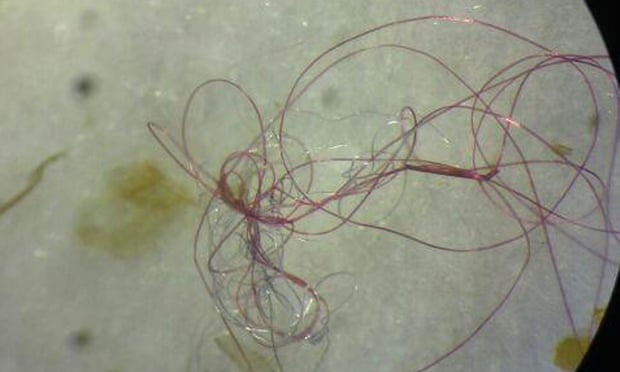SOURCE: The Guardian
DATE: October 16, 2020
SNIP: A study in California has laid bare the staggering scale of pollution from plastic microfibers in synthetic clothing – one of the most widespread, yet largely invisible, forms of plastic waste.
The report, whose findings were revealed exclusively by the Guardian, found that in 2019 an estimated 4,000 metric tons – or 13.3 quadrillion fibers – were released into California’s natural environment. The plastic fibers, which are less than 5mm in length, are primarily shed when we wash our yoga pants, stretchy jeans and fleece jackets and can easily enter oceans and waterways.
“The findings were nothing short of shocking,” said Alexis Jackson, fisheries project director at the Nature Conservancy in California, which commissioned the study from a research team at the University of California, Santa Barbara. The study, which the authors describe as the first of its kind, has not yet been peer reviewed or published.
Many picture ocean plastic pollution as large debris such as bags, straws and bottles, but in fact the majority consists of tiny particles that accumulate in tiny organisms and rise in the food chain.
Their size makes it easy for them to collect in everything from plants to plankton. A recent study found that 73% of fish caught at mid-ocean depths in the Atlantic had microplastic in their stomachs.
The number – 13.3 quadrillion – is tricky to wrap one’s mind around, so the study’s authors have made more digestible comparisons: it’s 130,000 times as many fibers as there are stars in the Milky Way galaxy. It’s also equivalent to 80m rubber duckies’ worth of plastic polluting the state every year.
Thousands of plastic microfibers are shed when synthetic clothes get washed. The microfibers then surf through washing machines and end up in the wastewater stream. A 2016 study showed that an average-sized load of laundry could release more than 700,000 fibers into wastewater, though how much is shed depends on several factors: the type of garment, materials used, wash temperature and detergent. Currently, there are no washing machine filters that catch the particles.
Wastewater plants have the ability to capture the fibers, but there’s a problem there, too. Plants are collecting the sludge and combining it with biosolids – basically, sewage – three-quarters of which gets treated then spread on agricultural fields. From there, the plastic fibers go right back into the waterways. “So we’re changing it from an ocean problem to a land problem,” says Geyer. “Rather than removing the fibers, we’ve just moved their location.”
The human health effects aren’t entirely clear, but a recent report found the average person ingests more than 5,800 particles of synthetic debris each year – and plastic fibers have been found in food, drinks and even in the Arctic. And the problem is increasing in magnitude: right now 60% of the material that makes up our clothes is synthetic. By 2050, the global production of synthetics is expected to triple, according to Jackson.
Plastic production and incineration is also linked to the climate crisis. Global plastic production is projected to more than triple by 2050, accounting for 20% of all fossil fuel consumption and representing a significant increase in greenhouse gas emissions.

